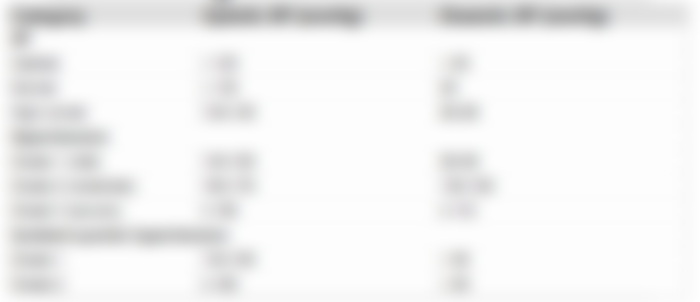Hypertension
Hypertension
· BP chronically elevated
· Persistently raised BP measured at past 2 visits and systolic and diastolic pressure or both >140/90mmHg
· Resistant hypertension – BP >140/90mmHg despite taking full doses of at least 3 antihypertensives including a diuretic
· Pseudo-hypertension – in old patients, BP recordings are high but without evidence of EOD, d/t non-compressible sclerotic brachial artery where a higher pressure is required to compress the artery
· Pseudo-resistant hypertension – BP levels persistently above normal values at clinic measurements but who do not have resistant hypertension – eg poor BP measuring techniques, white coat hypertension, poor compliance

Etiology
1. Primary/ essential HT (5%)
· Renal dysfunction, peripheral resistance vessel tone, endothelial dysfunction, autonomic tone, insulin resistance and neurohumoral factors
· Genetic factors - Black Americans and Japanese
· Environmental factors - high salt intake, heavy consumption of alcohol, obesity, lack of exercise and impaired intrauterine growth
2. Secondary hypertension (5%)
· Alcohol
· Obesity
· Pregnancy (pre-eclampsia)
· Renal disease
o Renal vascular disease
o Parenchymal renal disease, particularly glomerulonephritis
o Polycystic kidney disease
· Endocrine disease
o Phaeochromocytoma
o Cushing's syndrome
o Primary hyperaldosteronism (Conn's syndrome)
o Glucocorticoid-suppressible hyperaldosteronism
o Hyperparathyroidism
o Acromegaly
o Primary hypothyroidism
o Thyrotoxicosis
o Congenital adrenal hyperplasia due to 11-β-hydroxylase or 17α-hydroxylase deficiency
o Liddle's syndrome
o 11-β-hydroxysteroid dehydrogenase deficiency
· Drugs
o e.g. Oral contraceptives containing oestrogens, anabolic steroids, corticosteroids, NSAIDs, carbenoxolone, sympathomimetic agents
· Coarctation of the aorta
Blood pressure measurement
· White coat hypertension – greater r/o cardiovascular disease than normal subjects
· Average ambulatory daytime (not 24-hour or night-time) BP should be used to guide management decisions
History
· Family history
· Lifestyle (exercise, salt intake, smoking habit) and other risk factors
· Causes of secondary hypertension such as phaeochromocytoma (paroxysmal headache, palpitation and sweating)
· Symptoms
o CVS symptoms
o CNS
o Renal
o Eye
o Intermittent claudication
· Adherence to medication, compliance with lifestyle measures
· Complications such as coronary artery disease (e.g. angina, breathlessness)
Examination
· Radiofemoral delay (CoA)
· Enlarged kidneys (polycystic kidney disease)
· Abdominal bruits (renal artery stenosis)
· Facies, habitus of Cushing’s syndrome
· Central obesity
· Hyperlipidemia – tendon xanthomas
· LVH (apical heave)
· Accentuation of aortic component of S2
· S4
· Hypertensive retinopathy
· Evidence of PVD
· Fundoscopy
· CNS – TRO CVA
Target organ damage
· Blood vessels
o Larger arteries (>1mm diameter) - Internal elastic lamina – thickened; Smooth muscle – hypertrophied; Fibrous tissue deposition; Walls – less compliant
§ Aortic aneurysm
§ Aortic dissection
§ RAAS activation – reduced renal blood flow
o Smaller arteries (<1mm diameter) - Walls – hyaline arteriosclerosis; Lumen – narrows
§ Microaneurysm
§ CAD, CVD
· CNS
o Stroke
§ Cerebral haemorrhage
§ Cerebral infarction
o TIA
o Carotid atheroma
o Subarachnoid haemorrhage
o Hypertensive encephalopathy
§ High BP
§ Neurological symptoms - transient disturbances of speech or vision, paraesthesiae, disorientation, fits and loss of consciousness
§ Papilloedema
§ CT scan - haemorrhage in and around the basal ganglia
· Retina
o Papilloedema
o Cotton wool exudates
o Hard exudates
o Microaneurysms
o CRVO
· Heart
o APO
o CAD
o LVH – forceful apex beat, S4 (high incidence of cardiovascular complications)
o AF – d/t diastolic dysfunction caused by left ventricular hypertrophy or the effects of coronary artery disease
o LVF – in absence of CAD when renal function hence sodium excretion is impaired
· Kidneys
o Proteinuria
o Progressive renal failure – damage to renal vasculature
o ARF
Malignant/ accelerated phase hypertension
· May complicate hypertension of any aetiology
· Characterized by
o Accelerated microvascular damage with necrosis in the walls of small arteries and arterioles ('fibrinoid necrosis')
o Intravascular thrombosis
· Diagnosis
o High BP
o Rapidly progressive end organ damage
§ Retinopathy (grade 3 or 4)
§ Renal dysfunction (especially proteinuria)
§ Hypertensive encephalopathy
· Complication - ventricular failure à death
Investigations
All patients
· Urine
o Urinalysis* for blood (dysmorphic red cells – glomerular disease), protein and glucose – renal parenchymal disease, long standing hypertension
o FBC – anemia (CRF), polycythemia (Cushing)
· Blood
o Blood urea, electrolytes and creatinine*
§ Hypokalaemic alkalosis - primary hyperaldosteronism/ (more commonly) diuretic therapy
o Blood glucose
o Serum total and HDL cholesterol
· 12-lead ECG* (left ventricular hypertrophy, cardiac axis, coronary artery disease)
Selected patients
· Chest X-ray*: to detect cardiomegaly, heart failure, coarctation of the aorta (notching of inferior rib margins)
· Ambulatory BP recording: to assess borderline or 'white coat' hypertension
· Echocardiogram: to detect or quantify left ventricular hypertrophy
· Renal ultrasound: to detect possible renal disease (unequal size in renal artery stenosis); suprarenal mass
· Renal angiography/ duplex USG: to detect or confirm presence of renal artery stenosis
· Urinary catecholamines: to detect possible phaeochromocytoma
· Urinary cortisol and dexamethasone suppression test: to detect possible Cushing's syndrome
· Plasma renin activity and aldosterone (aldosterone to renin ratio): to detect possible primary aldosteronism
· Thyroid studies
* Urgent investigations – hypertensive crisis
Management
Considerations
· Quantify cardiovascular risk – to determine whether the likely benefits of therapy will outweigh its costs and hazards
o Coronary heart disease = 4/3 X 10 year coronary heart disease risk
· Threshold for intervention
o >160/100 mmHg
o >160 mmHg isolated systolic hypertension
o ≥ 140/90 mmHg +
§ 10 year CVD risk of at least 20% OR
§ Existing CVD OR
§ Existing target organ damage
· Treatment targets
Treatment of hypertension
· Non-drug therapy - lifestyle measures
o Correct obesity
o Reduce alcohol intake
o Restricting salt intake
o Regular exercise
o Increase consumption of fruits, vegetables
o Quit smoking
· Drug therapy
o Thiazides, other diuretics
§ Bendroflumethiazide 2.5mg
§ Cyclopenthiazide 0.5mg
§ Furosemide 40mg daily
§ Bumetanide 1mg daily Loop diuretics
(Loop diuretics – advantageous over thiazides unless there is substantial renal impairment/ used in conjunction with an ACE inhibitor)
o ACE inhibitors – inhibits conversion of angiotensin I to angiotensin II; care in renal impairment/ renal artery stenosis d/t reduction in filtration pressure in glomeruli, precipitation of renal failure ; check BUSE; a/e - first-dose hypotension, cough, rash, hyperkalaemia and renal dysfunction
§ Enalapril 20mg daily
§ Ramipril 5-10mg daily
§ Lisinopril 10-40mg daily
o ARB – no cough, better tolerated
§ Irbesatan 150-300mg daily
§ Valsartan 40-160mg daily
o CCB – useful in elderly; a/e - flushing, palpitations and fluid retention
§ Amlodipine 5-10mg daily
· A/e – tachycardia, ankle edema, headache
§ Nifedipine 30-90mg daily
§ Diltiazem 200-300mg daily
§ Verapamil 240mg daily When angina coexists; a/e – bradycardia
o Beta-blockers
§ Metoprolol 100-200mg daily
§ Atenolol 50-100mg daily
§ Bisoprolol 5-10mg daily
o Combined β- and α-adrenoceptor antagonists
§ Labetalol
§ Carvedilol
o α1-adrenoceptor antagonists (α-blockers)
§ Prazosin
§ Indoramin
§ Doxazosin
o Drugs acting directly on smooth muscle (a/e – first dose and postural hypotension, headache, tachycardia, fluid retention)
§ Hydralazine
§ Minoxidil – increased facial hair
Combination therapy – synergistic/ complementary actions
· Adjuvant drug therapy
o Aspirin
o Statins
Emergency treatment of malignant hypertension
· Too rapid BP lowering can compromise tissue perfusion (d/t altered autoregulation) à cerebral damage including occipital blindness; coronary, renal insufficiency
· Controlled reduction to a level of about 150/90 mmHg over a period of 24-48 hours is ideal
ü Bed rest
ü Oral therapy
ü Parenteral therapy
o IV/IM labetalol
o IV glyceryl trinitrate
o IM hydralazine
o IV sodium nitroprusside
Refractory hypertension
ü Non-adherence – most prevalent
ü Inadequate therapy
ü Failure to recognize underlying cause
Novel therapies
- Carotid baroreceptor stimulation
- Catheter-based renal sympathetic nerve denervation
Hypertensive crisis – acute increase in BP (>180/110) +/- EOD
1. Hypertensive emergencies – with EOD
a. Retinal
b. Cardiac
c. Neurological
d. Renal
BP control within a few hours (DBP 100-110 within 24h)
2. Hypertensive urgencies – no EOD
BP control (DBP 100-110) within 24h
DOC
CAD, HF – iv nitroprusside, nitroglycerin
APO – above, iv furosemide, ACEI
Stroke – B-blocker, CCB, diuretic, ACEI
Management
- Oral
- B-blocker (atenolol, labetalol)
- ACEI/ARB – captopril
- CCB – amlodipine
- Parenteral – sodium nitroprusside, GTN, labetalol (ivà oral after BP normalizes), hydralazine, esmolol, nicardipine
Significance:: Diastolic > systolic BP
First choice anti-hypertensive in reducing BP – CCB (“dipine” group) (ACE-I takes time for onset of action)
